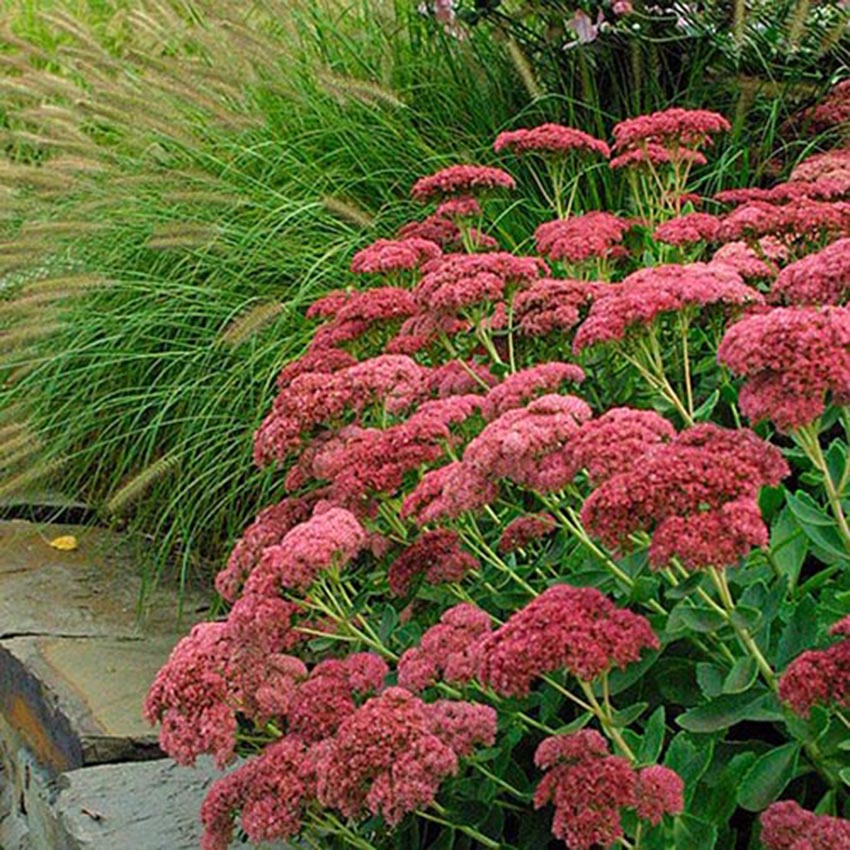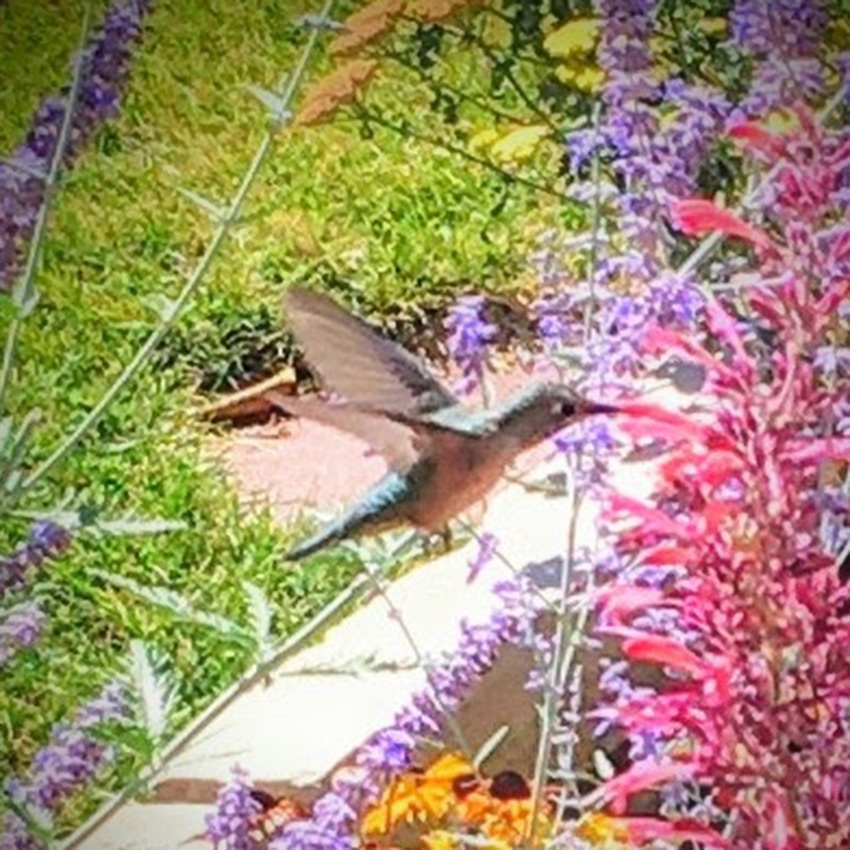Who’s in Your Garden?
- 2021-09-05
- By mkirk
- Posted in The Garden Buzz
By Kathi Thistlethwaite, Colorado Master Gardener
This six-part series will feature topics of interest and timely delights found in the garden.
SEDUM ‘AUTUMN JOY’

The ‘Autumn Joy’ part of the Sedum name is appropriately descriptive. When many garden perennials are slowing down for autumn, this succulent member of the Crassulaceae family is putting on a show with its bronzy-pink blooms in late August to early September. Blooms last around six weeks, and if stalks are left until spring, deep mahogany seed heads give the garden some winter interest.
Easy to care for Sedum ‘Autumn Joy’ needs full sun and soil that is not high in organic matter. Diseases and insects are generally not problems, while bees and butterflies are constant visitors while blooms last. A mature plant will reach close to two feet tall. https://planttalk.colostate.edu/topics/annuals-perennials/1046-sedum/
MIGRATING HUMMINGBIRDS

There are approximately 350 species of hummingbird in the world. In Colorado, the broad-tailed and rufous hummingbirds are commonly observed, as are the less common calliope and black-chinned hummingbirds. Most North American hummingbirds migrate southward in fall to winter in Mexico, the Caribbean or Central America. Every species’ migration timelines and routes are different.
Hummingbirds are solitary migrants, meaning they do not migrate in flocks like other birds. They are also territorial and both males and females will aggressively protect their territory. Male hummingbirds may have a territory up to a quarter of an acre in size. Females are more likely to protect the area around the nest and they will chase away males because their bright colors could attract predators.
https://www.audubon.org/content/how-create-hummingbird-friendly-yard
https://www.allaboutbirds.org/guide/browse/taxonomy/Trochilidae
CANADA THISTLE

Canada thistle is a noxious weed common in Colorado. In 2002, more than 100,000 acres were estimated to be infested with the weed. It reduces foraging in pastures because cattle often will not graze near infestations.
Large scale and urban landscape management are best achieved by stressing the plant, forcing it to use stored root nutrients. This hardy perennial can survive a number of stressors (cultural or chemical). Successful eradication occurs only after repeated application of cultural controls or treatments, and total eradication may take several years.
https://planttalk.colostate.edu/topics/weeds-cultural-problems/2102-canada-thistle
https://www.summitcountyco.gov/DocumentCenter/View/11988/Thistle_brochure_good?bidId=
Horticulture Resources
- Garden Buzz Archives
- CSU Extension Resources
- Colorado Master Gardener Program
- Foothills to Plains Native Plant Master Program
- Native Bee Watch Community Science Program
- The Co-Hort Blog
- PlantTalk Colorado
- Soil Testing
- Plant Select
- Emerald Ash Borer
- Japanese Beetle
- Colorado State Forest Service
- Ask an Expert


